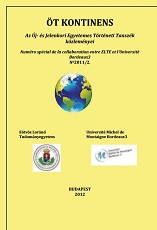L'Europe multilingue - enjeux et risque
Multilingual Europe - stakes and risks
Author(s): Éva KelemenSubject(s): Language and Literature Studies
Published by: Eötvös Loránd Tudományegyetem, Új-és Jelenkori Egyetemes Történeti Tanszék
Keywords: multilingualism; language skills; language learning trends; duration; intensity and effectiveness of teaching; motivation
Summary/Abstract: The main goal of the study to analyse the lenguistic tableau of multilingual Europe in the framework of the chances of employment for young Hungarian professionals. Today the European Union has 500 million inhabitants and recognizes 23 official languages. Howewer sixty more languages are used bisedes the above mentioned 23 one. EU has 23 official languages only because some languages (like French, Greek, German) are in used in more than one country. 56% of European citizens claim that they know a second language apart from their mother tongue, but almost half of them can speak only their mother tongue. We analyse the Hungarian as well as the English specifics, especially the attitude of native English speakers to learning foreign languages. Also, we are going to examine the situation of the countries with neo-Latin languages, and attempt to answer the question: why is it so difficult to learn at least one foreign language in these countries? We shall attempt to survey the effects and contributions of lingustic competence, regarding economy. What kind of relationship exists between the economic competitveness and the linguistic strategy of a company or a society?
Journal: ÖT KONTINENS
- Issue Year: 2011
- Issue No: 2
- Page Range: 17 -22
- Page Count: 6
- Language: French

